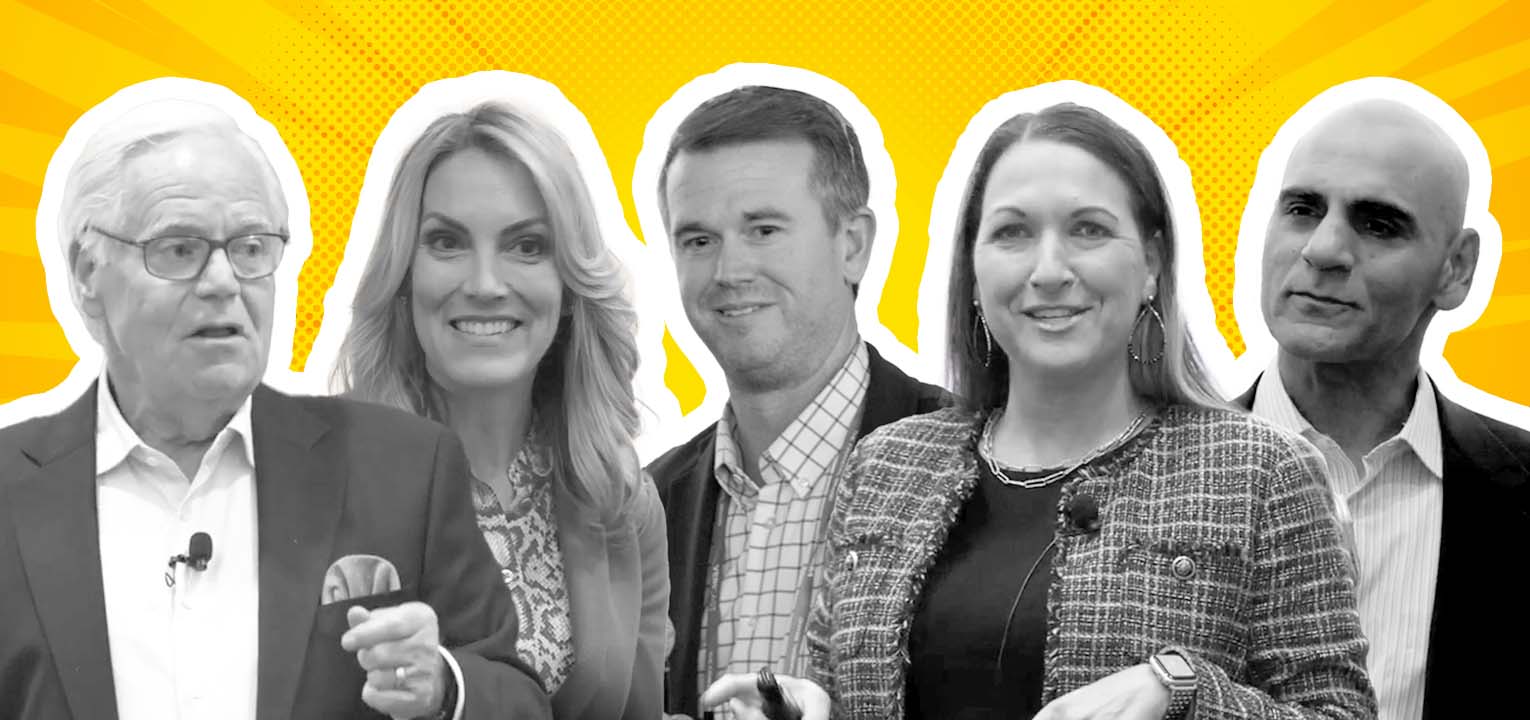July 3, 2021
5 capabilities you need to win with self-driving finance

Even though self-driving cars are fast becoming a reality, consumers aren’t quite ready for them yet. Surveys consistently show that consumers aren’t sure they’re safe.
But this doesn’t mean that they’re rejecting self-driving cars out of hand. On the contrary, they’re already embracing some self-driving features like cruise control, parking assistance and route guidance. Confidence in automation is growing gradually.
Similarly, consumers are slowly becoming used to their banks automating some small aspects of their account management, for example, issuing alerts when they’re about to go into overdraft.
According to Accenture: Trust-Based Propositions could generate an average of 9% revenue uplift for banks. This paves the way for banks to introduce much fuller automated AI financial solutions, like “self-driving finance,” to build stronger client relationships and help customers attain financial wellness, while banks benefit from improved retention and revenue growth.
What is Self-Driving-Finance?
Personetics strives to actualize a world of “Self-Driving Finance” where banks proactively act on behalf of their customers to better monetize the relationship value. In the near future, banks and other financial institutions will think and act on their customers’ behalf.
But first, what exactly is “self-driving finance” – also known as “autonomous finance”?
Forrester Research defines it as:
“Algorithm-driven services that make financial decisions and/or take action on a customer’s behalf.”
- At the basic level, this involves anticipating your customer’s needs and keeping them involved. So, for example, your system might suggest a home improvement loan if it identifies that they are spending a lot of money at Home Depot. But your customers are still fully responsible for implementing the advice.
- When self-driving finance becomes more sophisticated, your system can take financial actions on behalf of your customer. So, they might indicate that they’d like to save $500 each month. Your algorithm can identify when they can afford that without becoming overdrawn and transfer the money when it’s safe to do so.
- Finally, your system not only acts on their behalf but thinks on their behalf. At this level, the system might determine that a customer can afford to save more than they indicated and put more money aside for them because it’s in their best interest.
From FOMO to JOMO
This fully self-driving model doesn’t exist yet. But that doesn’t mean you can ignore it – and not only because if you’re not a pioneer, but you will also get overtaken.
People are under increasing pressure to develop financial resilience in the wake of COVID. But without high levels of financial knowledge or guidance, people often struggle with financial decisions, like how much to save, how often and where to save.
The cognitive load is enormous – and growing, as a plethora of new products have been introduced to the market, and people’s money is spread across several different platforms.
It would only be natural if people started looking to their banks to take away the decision-making burden and manage their money more smoothly whilst helping them gain better financial outcomes. I call it moving from FOMO – Fear Of Missing Out on crucial financial information – to JOMO, or the Joy Of Missing Out on handling all their financial affairs.
Banks that can deliver this transformation can reap significant rewards, including increasing customer loyalty, lifetime value and retention rates and reducing delinquencies and defaults.
Rethink your role in your customers’ lives
You need a shift in mindset and to rethink your role in your customers’ lives. Currently, most banks focus on making their processes smoother, for example, reducing the number of clicks necessary to take out a particular loan. However, self-driving finance requires a more proactive approach, where banks try to anticipate their customers’ needs and then act on them. This requires a deeper holistic understanding of the customer.
5 competencies to implement self-driving finance
Peter Wannemacher, a Digital Banking Principal Analyst at Forrester Research, has identified five capabilities that firms need to capitalize on the opportunity of self-driving finance:
- BI transactional data analysis capabilities to recognize patterns of past behavior and developing algorithms to identify significant trends in their transactions. Only then can your systems start offering financial advice, and only once this works well can you automate the execution.
- Strong infrastructure – primarily around data – that enables everything from money movement to credit decisioning to real-time analytics.
- Great talent – Employees or partners with the skills, knowledge and aptitude to write the algorithms, write the software and shape the experience for the end-user.
- Intellectual property – Proprietary algorithms to differentiate their autonomous finance tools.
- Excellent marketing – To drive growth through self-driving finance, you need to be able to articulate to customers what is distinctive about your offering and why it’s valuable to them.
The banks and firms which are at the forefront of this work are dynamic and agile. They are constantly designing, building and measuring new ideas, iterating as necessary. Unfortunately, this is an attribute that is hard to create and difficult to buy!
This may sound overwhelming. But as Peter Wannemacher notes,
“Executives at banks… and other financial services often put too much emphasis on building their own capabilities when other external partners could do it better and more efficiently. When it comes to autonomous finance, executives should strive to avoid an over-reliance on internal talent and tech.”
In reality, much of the infrastructure, talent, IP and marketing you need to launch self-driving finance in your bank can readily be borrowed or bought. And Personetics, the global leader in data-driven personalization, can make this easy for you.
Hundreds of Out-of-the-box personalized financial insights, programs and advice
- Personetics’ “Enrich” solution takes your customers’ financial data and cleans, enriches and categorizes it to help you understand their financial behavior at a deep level. You’ll be able to identify new opportunities to cross- and upsell your customers.
- Personetics’ “Engage” solution provides banks with over 300 out-of-the-box, tested and verified insights & pieces of advice, as well as a codeless management system to quickly increase engagement and servicing.
Banks like U.S Bank – the 5th largest in America – are already using this solution to provide their customers with real-time insights into their own financial situation. This includes, for example, helping them monitor their monthly expenses, set financial goals and budgets, warning them of an impending overdraft and sending them personalized saving tips.
Banks can also use “Engage” to help small business owners control their finances, giving them for example, easy-to-digest cashflow predictions and trackers.
- Our “Engagement Builder” codeless creation & management console helps you customize all this for your own customers, so you can serve them in the most appropriate way and differentiate in your market.
- Our “Act” solution takes self-driving finance one step further, not only giving customers insights but using automation smartly to help them reduce debt, save or invest funds.
So, for example, customers might set a goal of saving more. Our system can identify when their money will work harder in their savings account and move it for them to one or more accounts.
Ally Bank, which uses this solution, even moves customers’ money to external accounts. The system periodically notifies the customer of their progress to keep them involved and deepen their retention. And to build trust in the technology, the smart algorithm will never move their money if they are in danger of becoming overdrawn.
Banks have used these solutions to drive significant growth, seeing on average a 35% increase in customer engagement online, 15-20% new account and balance growth, and 10% year-on-year digital sales growth in personal loans.
As these semi-automated solutions become more common, bank customers are going to start demanding them, just like cruise control and parking assistance are now standard in cars. Fully self-driving finance may be some years away, but if you don’t press the accelerator now, you risk being left in “Park” as your competition pulls away.
Click here to watch the Webinar Replay of How To Harness Self-Driving Finance To Drive Growth, featuring Peter Wannemacher Principal Analyst at Forrester.
The webinar covers:
- What is a Self-Driving Finance strategy and what is the business impact?
- The current state of Autonomous Finance in the market.
- How financial service companies embrace self-driving finance.
- The capabilities and competencies a firm needs to drive growth.
- The steps that banks need to take to start identifying self-driving finance opportunities and designing experiences.

If you’d like to learn how we can help you launch self-driving finance in your organization, contact us, and one of our solutions will reach out to you shortly.
Want to explore how your bank can harness the power of AI to engage and serve customers? Request a demo now
Latest Posts

Explore our Spring Release Highlights – From Integrated Marketing Offers, to Custom Trackers, and AI Innovation

Showing the Human Side of Digital Banking: Insights from Desjardins' Nathalie Larue

The Emergence of Cognitive Banking at This Year's Financial Brand Forum

Dorel Blitz
VP Strategy & Business Development
Dorel Blitz brings over ten years of experience in global strategy and business development in the financial services industry. Dorel joins Personetics from KPMG, where he headed the Fintech sector at KPMG Israel and a member of the global Fintech practice. In this role, Dorel was instrumental in establishing KPMG’s collaborative relationships with global financial institutions and leading Fintech companies including Personetics. He also acted as a subject matter expert and led advisory projects involving digital transformation strategies with financial services organizations. Prior to joining KPMG, Dorel led the Innovation & Fintech practice at Bank Leumi, and earlier in his career, he headed the banking & finance division at global research firm Adkit.









